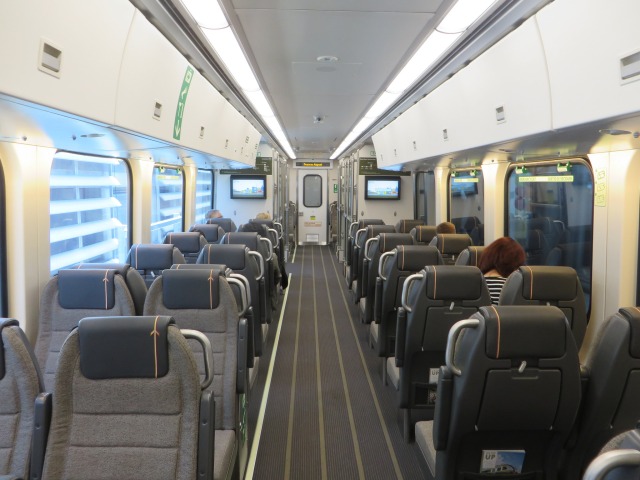nfitz
Superstar
The underground (central) section of Eglinton is grade separated. It's also being built now with automation. Yes, difficult east of Laird - but the ridership estimates there are much lower, so you can turn 50% of the trains before getting to Scarborough.If people are skeptical about OL running every 90s, how do we expect a low-floor LRT system that has to also run on the surface human-operated without grade separation to do likewise?So yes, 40 metre trains every 3 minutes would be a similar (slightly less I think) capacity to slightly narrower 60 metre trains every 4 minutes. But it easily meets the long-term demand projections at even that frequency. But with a huge ability to increase capacity 300% if they go for 90-metre trains every 2 minutes. 400% if they do the underground section every 90 seconds.
Yeah, I admit 90 seconds is pushing it - but that's equally true on both systems - particularly at Waterfront station, where you have an entire train disembarking, at the same time another entire train is trying to load!
Ah, yes, that's true. While the Toronto Subway and the Canada Line Skytrain both have peak loading capacities of about 2.55 people/m² or so, the low-flow Toronto (and Ottawa!) vehicles only have about 1.65 people/m². You'd have to convert to high-floor equipment/platforms on the Eglinton Line to do that. However the tunnel diameters are built for this - even for wider trains. So ultimate capacity isn't necessarily ultimate capacity. Either way, we'll all surely be dead, before demand is triple what they estimate for 2041!The Eglinton Line's final buildout capacity is 15,000 ppdph, the same as the Canada Line.
This is one of the advantages of a non-PPP approach to design. There's a safety factor of 3 on the capacity in 30 years time. What was the design safety factor for Vancouver? I'm not aware of projects 2030s ridership was of the Canada Line when they announced the start of it?
This is my fear with the Ontario Line (and the new REMs in Montreal). I'm sure capacity will be fine day one. But what when they've extended the line out completely, and it's 2050? Some demands estimates have been close to 28,000 ppdpd for the Ontario Line. So should we design for 90,000? 80,000? The downtown relief line was only being designed for 48,000. Sure, we can make that shorter ... but 30,000 for the Ontario Line seems low - and will be overloaded perhaps in our lifetimes.
The first REM line in Montreal (red line?) is designed for an ultimate capacity of 24,000 per hour (600 per train every 90 seconds ... sure, crush load is higher ... but you can't run every 90 seconds at crush load - we've seen on Line 1 what happens when you do that). What are the actual 2050s ridership forecasts (or heck, 2020s). I haven't seen this.
Last edited:






